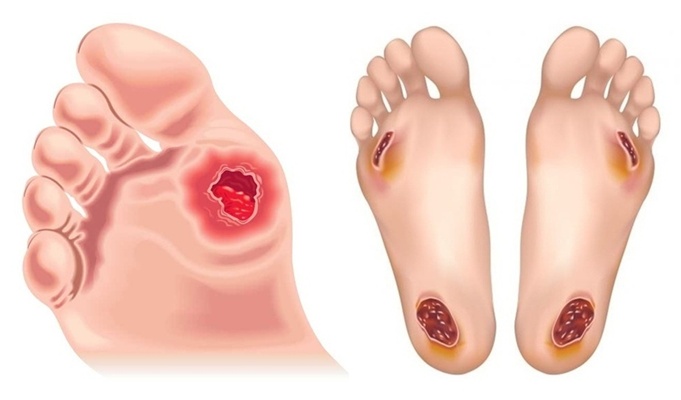Diabetes is a widely prevalent disease that is plaguing a major proportion of the world population today. It is characterized by the increase in levels of blood glucose, which is attributed to the inability of the body to use sugar effectively. The disease is often called a “silent killer” because it damages the organs over a period of time, without the patient even being aware in some cases. The adverse effects of diabetes are many in number and they can cause intensive damage if the disease is unchecked over a prolonged time period. The common diabetes complications include cardiovascular disease, neuropathy, retinopathy, chronic kidney disease, and dental problems, to name just a few.
Besides these well-recognized complications, diabetes can also have an impact on wound healing. It has been found that wound healing is slowed down in diabetics. Moreover, the risk of the worsening of the wound is considerably higher in such people. This is the reason that a diabetic needs to pay a lot more attention to a chronic wound than a normal individual. The connection between diabetes and wound healing is profound and needs to be well-understood by diabetic patients to deal with the condition more effectively. Let us explain the connection between diabetes and wound healing in detail, considering the factors that contribute to the risk of chronic wounds in such patients.
Blood glucose levels: The key culprit behind slow wound healing in diabetics is the elevated levels of blood sugar. A high blood sugar leads to the stiffening of the arteries, which results in the narrowing of the blood vessels. This slows down the process of healing of the wounds and can also cause them to get even worse.
Poor circulation: The narrowed blood vessels reduce the flow of blood and oxygen to the wound. Additionally, the tissue does not get adequate nutrients due to the impaired function of the red blood cells. Together, the shortage of blood, oxygen and nutrients in the affected area has an adverse impact on wound healing.
Impaired immunity: Diabetes has a detrimental effect on the immune system, which impairs the ability to ward off infections. With this, infections become dominant and can attack the body cells and tissues easily. This is another factor that not only slows down the recovery rate for the wounds and also aggravates them further. If untreated, infections in wounds can cause sepsis, gangrene and serious bone infections.
Diabetic neuropathy: Diabetic neuropathy is a major complication related to diabetes. When blood glucose levels are beyond control over a prolonged time span, the patient can suffer from nerve damage. The neuropathy worsens with time and the patient can even develop a loss of sensation subsequently. In such a case, he may not be able to detect a developing wound or infection. The wound may go undetected and untreated, with multiple complications coming up.
Can anything be done to speed up wound healing in diabetics?
Chronic wounds can be a dire complication in diabetics. If left untreated, they can even require surgical procedures and amputations in very serious cases. However, diabetics can follow some guidelines to ensure that they can speed up the wound healing process. The key lies in keeping the blood sugar levels in control. Here are some measures that experts recommend for this purpose:
- Eating an optimal low-sugar diet is the best way to keep a check on the levels of blood glucose. Additionally, the intake of adequate carbohydrates, protein, antioxidants and vitamin C accelerate the healing process. An expert dietician can be consulted to get the right diabetic diet plan.
- Maintaining an exercise routine is equally important as it not only checks the elevation of blood glucose but also enhances the blood circulation in the body. Both the factors play a key role in speeding up the healing of wounds.
- Being vigilant about the symptoms of diabetic neuropathy is important. Also, the patient should check the new blisters and wounds and report them to the specialist at the earliest. It is best to address infections sooner rather than later before they cause extensive damage.
- Abstaining from alcohol and smoking also have a positive impact on the healing process. While alcohol can elevate the blood sugar levels, cigarette smoke can hamper circulation.
- The wound should be kept clean and pressure-free to aid the healing process. Special kind of footwear is recommended for patients with foot ulcers.
Chronic wounds are definitely a key challenge for diabetics but they are not untreatable. With the right care and guidance, patients can resolve the problem and protect themselves from serious side effects of slow wound healing.

